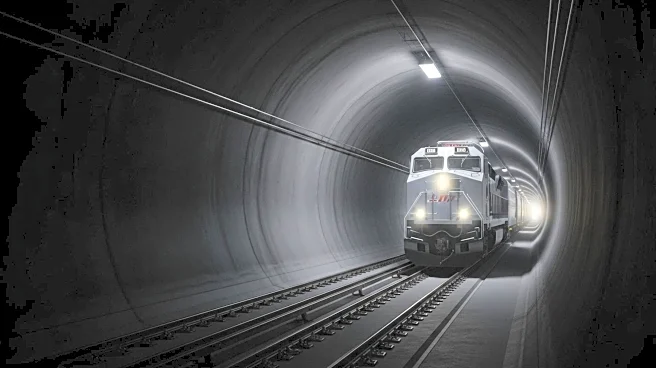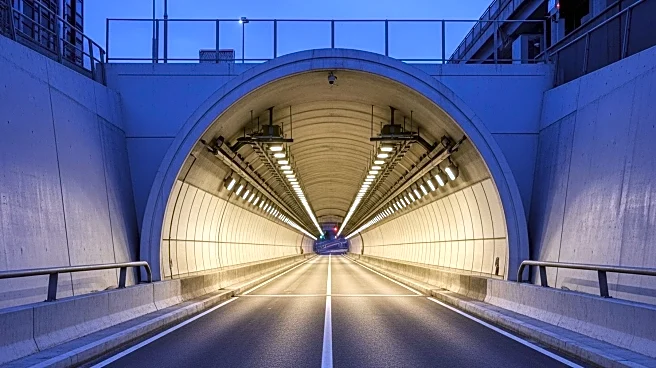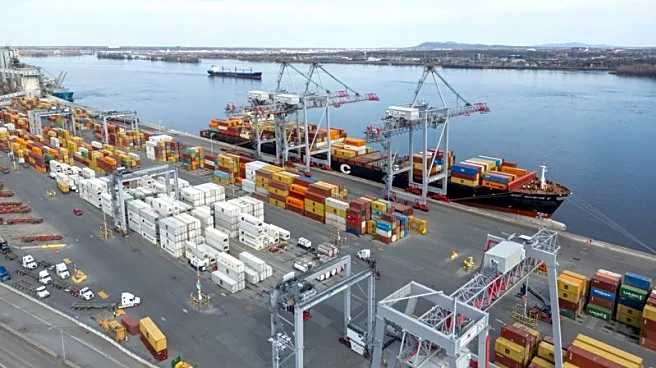What is the story about?
What's Happening?
A joint venture between Skanska and Fay has completed the $450 million Howard Street Tunnel Project in Baltimore nearly two years ahead of schedule. The project aimed to expand the tunnel's clearance to accommodate double-stack trains, enhancing freight rail efficiency along the Mid-Atlantic corridor. The expedited completion was attributed to a progressive design-build delivery method, continuous tunnel outage approval by CSX, and 24/7 worker scheduling. The project involved raising the tunnel's clearance by two feet without damaging the original 1895 archway, using a custom-built gantry crane to set precast concrete slabs for the new floor.
Why It's Important?
The early completion of the Howard Street Tunnel Project is significant for freight transportation in the U.S., particularly in the Mid-Atlantic region. By allowing double-stack trains, the project increases the capacity and efficiency of freight rail, potentially reducing transportation costs and improving supply chain logistics. This development supports CSX's capital improvement initiatives and could lead to increased competitiveness in the rail industry. The use of innovative construction methods and collaboration between stakeholders highlights the potential for similar projects to enhance infrastructure efficiency across the country.
What's Next?
The remaining tasks for the project include constructing a detention pond and starting up the pump station at the tunnel's west portal. The successful completion of this project may encourage similar infrastructure upgrades in other regions, potentially leading to increased investment in rail modernization. Stakeholders may also explore further applications of the progressive design-build method to optimize future projects.
Beyond the Headlines
The project underscores the importance of collaboration and innovation in infrastructure development. The use of a progressive design-build approach facilitated strong cooperation among the owner, contractor, and designer, balancing priorities and construction methods. This model could serve as a blueprint for future infrastructure projects, promoting efficiency and cost-effectiveness.
AI Generated Content
Do you find this article useful?















